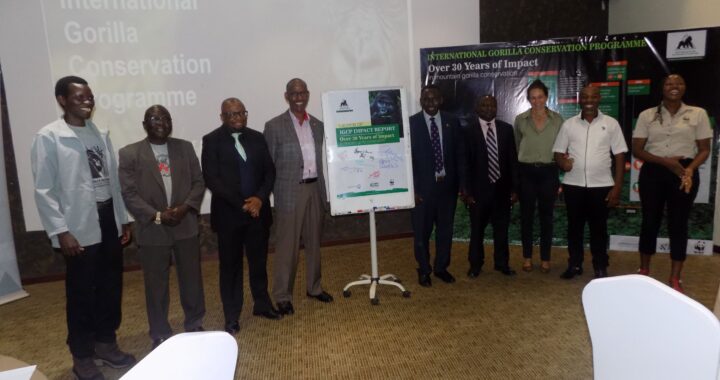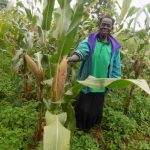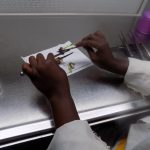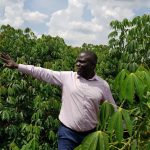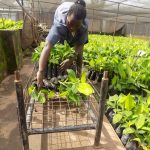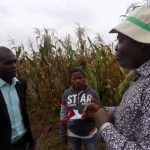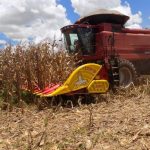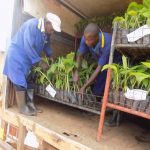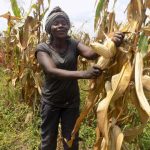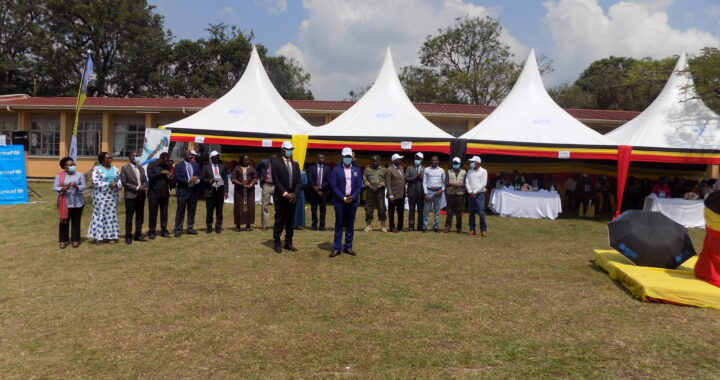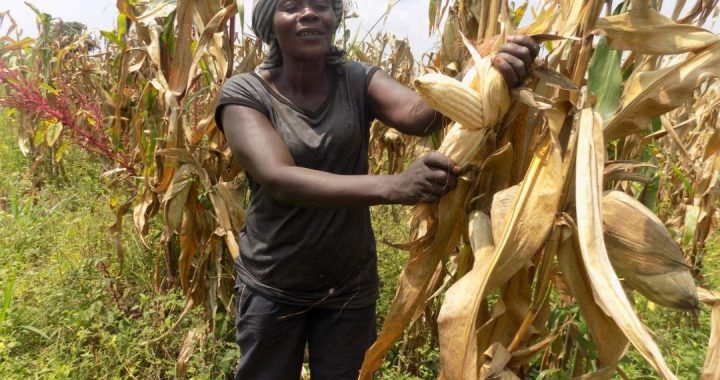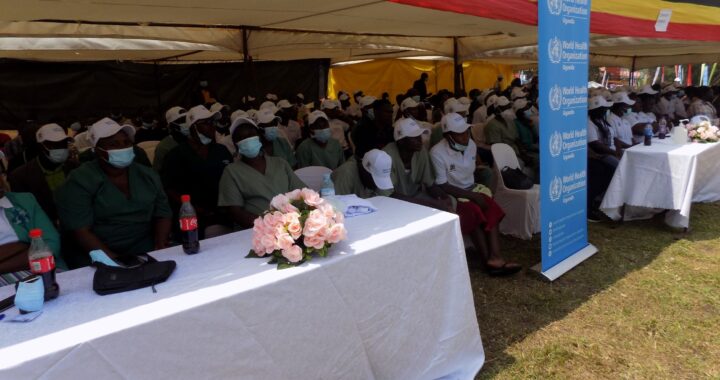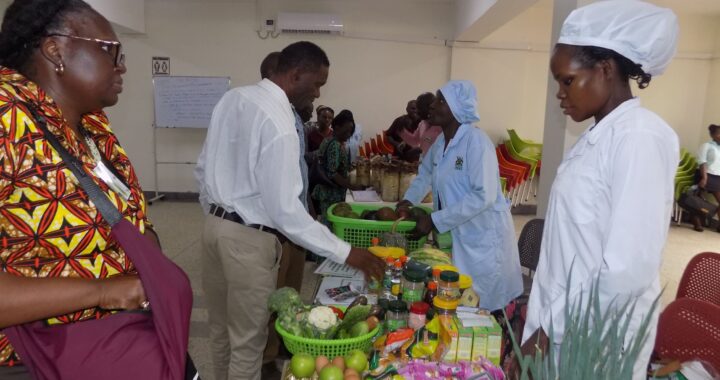Environment Cooperatives build alternative livelihoods in protected areas
8 min read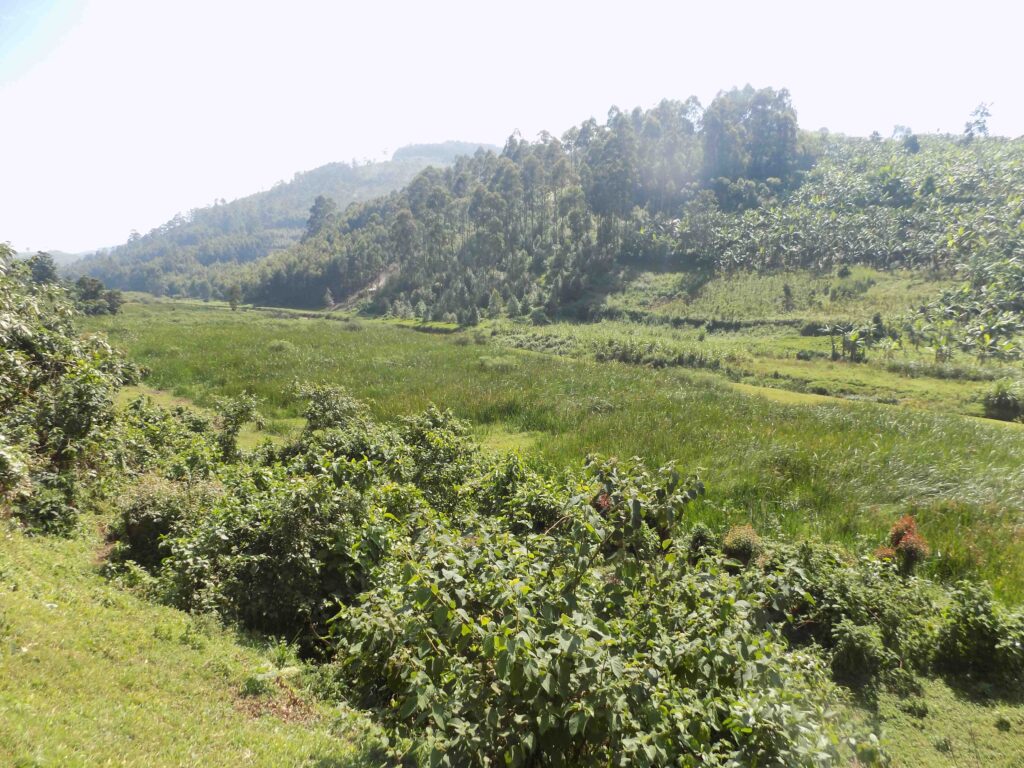
A recovering wetland in Nyamigamba village,, Kabale district
Environment Cooperatives build alternative livelihoods in protected areas
Christopher Bendana
Kabale
Laban Zaribugire proudly pointed to the portion of the wetland that had been restored within the Ikona wetland ecosystem in Kabale district, southwestern Uganda.
“Look at the mash on each side that is closing on the river,” he said, pointing in the valley where the swamps were recovering on either side of the river in Nyamigamba, Kabale district. “You see that garden of Irish potatoes; before our engagement, the plants would be tipping the water.”
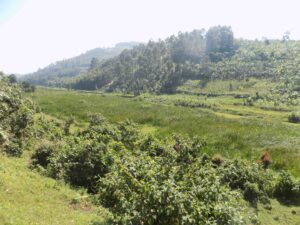
The engagement he was referring to was the swamp restoration program, a collaboration between the Uganda Ministry of Water and Environment (MWE) and the Upper Maziba Farmers Water and Environment Cooperative (UMFWEC), an environmental cooperative Savings and Credit Cooperative Organization (SACCO).
This is one of the several programs run by the water ministry under its
“Enhancing Resilience of Communities to Climate Change Through Catchment Based Integrated, Management of Water and Related Resources in Uganda” project (EURECCCA). The project ran from 2017-2023 and was funded by the Adaptation Fund under the Sahara and Sahel Observatory.
The project was meant to help communities become resilient against floods and landslides through catchment integrated, equitable and sustainable management of water and related resources. The Maziba program ran alongside one in Aswa in the north and one in Awoja in the east.
Indeed, he was right: By December 2023, part of the swamp in Nyamigamba within the Ikona wetland ecosystem had recovered. The gardens were also no longer spilling into the water. Instead, they end at the pillar set by the MWE. People in the local community are also more aware of the role of swamps in the ecosystem. They talk of their purification role and slowing the movement of stormwater.
But the water was still muddy, and some parts of the swamp were dotted with Friesian cows, meaning more work was required for the swamp to reclaim its total area and purify the water.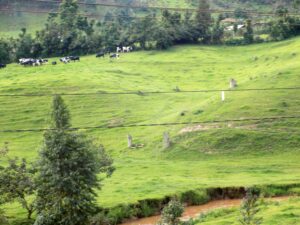
Uganda has lost about 40 percent of its wetlands over the last 20 years, many of them filled as Uganda’s rising population looks for new farmland or to create spaces for new industries, according to the environment ministry.
A report titled The State of Wetlands in Uganda 2019 by the Ministry of Water and Environment indicate a decline of coverage from about 16 percent in 1994 to 13 percent in 2015 of the total land cover in the country. Of this about nine percent is intact, while four percent is degraded.
The study, the first of its kind in Uganda, was based on mapping datasets of 1994 and 2015. It lists the main drivers of wetland degradation: urbanization, population growth, uncoordinated planning and demand for arable land. It warned that at the current trend of degradation, the country would have no wetlands by 2040.
Recently, the wetland started reclaiming itself. Kabale residents said that the weather patterns have changed, and there is more flooding now than before.
“The flooding is causing the Irish potatoes to rot in the gardens before harvest,” Hope Busingye, a poultry farmer from Karugashe village, Butobere Parish, Central Division Kabale municipality, and a member of the SACCO group, told ScienceNowMag.
“We were already eager for alternative livelihoods as the gardens in the wetlands were always flooded. Road works and construction of markets in Kabale town have led to more stormwater and wetland flooding.
“The weather pattern has also changed. It used to rain after we harvested. No more, but we don’t listen. Some people are still growing in the wetland.”
Today, Busingye, who used to farm in a wetland on land rented from a National Forestry Authority (NFA) licensee with some improved income, and several others have decided to leave the swamps and venture into alternative livelihoods.
MWE through Excel Hot Consult, an agribusiness consultancy company, provided them training in skills such as bookkeeping, group formation and project identification.
In 2023, the ministry also provided capital (a grant) of UGX 206 million (USD $51,500) to the 335-member group spread across Kabale and Rubanda districts.
The fund has since grown to UGX 260 million (USD $65,000) through the selling of shares and membership fees. Any member who borrows above UGX 1 million (USD $250) gets a share, and one pays UGX 20,000 (USD $5) to become a member.
Apart from apiary, others are also involved in cattle rearing and mushroom growing.
How it works
Members form groups and borrow from the cooperative though each is free to choose their enterprise. The maximum loan is UGX 3 million (USD $750) per member, payable after 18 months at one percent per month. There is also a grace period of three months.
Busingye, the urban farmer in Butobere, Kabale municipality, has invested in poultry since June last year. She buys 300 one-day-old kuroiler chicks every month, which she sells after 30 days. The kuroiler is a hybrid chicken first bred in India, which has easily adapted to the Ugandan environment. They eat and look like Ugandan indigenous chicken.
“My income is close to what I was earning previously while farming in the swamps, but there are fewer uncertainties in poultry than in Irish potatoes farming,” she said. “For Irish potatoes, one season would do well, then there would be flooding in the next season. [Now], you only have to take good care of the birds.”
Deogratias Kabebasiza, a modest farmer in Kigongi, Kabale town central division, is another member practicing apiary. Though he is yet to earn from his project, he is opportunistic.
An experienced farmer, he plants beans, maize, and Irish potatoes and is also into piggery. He said soil in the wetlands yields better than that on slopes.
Kabebasiza’s plot of land partly covers the borders of a nearby wetland and a eucalyptus plantation, which is owned by NFA. The water ministry has since also installed a pillar in part of Kabebasiza’s land to demarcate the wetland boundaries.
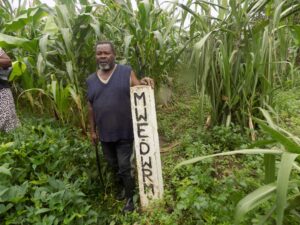
“I know the role of wetlands,” said the former local leader. “I have learned a lot about the environment from the radio. I am ready to leave if they can compensate me,” he said.
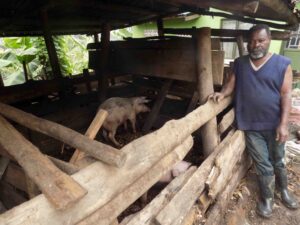
Jolly Takacungurwa of Mwanjari ward, Southern Division and seven other members of her group are into apiary. They took loans of UGX 8 million, approximately USD $2,000 in April 2023, to invest in alternative livelihoods. Their loan is paid within 18 months at an interest rate of one percent.
“We have 160 beehives, from which one can harvest 10 kilograms per season per beehive (within three months). With a kilogram of honey at UGX 10,000 (USD $4) we will be able to pay the loan in six months after our first harvest and then we are in business,” she said.
Annet Nantongo, the deputy coordinator at the water ministry, the funder of the cooperative told ScienceNowMag that the ministry funded cooperatives in three wetland catchment areas: Maziba in the southwest, Aswa in the north, and Awoja in the east.
The Maziba area includes Kabale, Rubanda, Rukiga and Ntungamo. Aswa area covers Kitgum, Lira and Otuke, while Awoja includes Serere, Soroto, Kumi, and Kapchorwa.
Nantongo said the aim was to enhance the resilience of the people encroaching on the wetland to climate change by providing them alternative livelihoods that provide better incomes than what they have been earning from the swamps.
Communities choose their own activities where they have expertise. Piggery, poultry, and animal rearing are mainly practiced in Maziba, Shea butter and sunflower processing are done in Aswa, and Owajo mainly features goat and sheep rearing.
Patrick Byakagaba, a lecturer of natural resources governance at Makerere University, believes alternative livelihoods are better than enforcement and multiple laws.
“Natural resources are important to their livelihoods, as there seems to be no other source for their livelihoods,” he said, hypothesizing why these communities evade wetlands.
He also suggested linking the members to hotels and enterprises that have sustainable values, such as Sheraton Hotel.
“This will improve their income,” he said.
Fred Muhumuza, an economist and director of the think tank Economic Forum at Makerere University Business School in Kampala, called the environmental cooperative a good initiative but suggested regular checks during the first three years under a so-called graduation model. This would allow for corrections and improvements so that people don’t fall back to their former positions.
“Notice who is struggling,” he advised the implementer of the program. “Work with them until you are sure they are there. Keep watching them. It is a new area. If I have a problem, I have someone to consult, fallback. If it is successful, the ministry can make it an example.”
Like Byakagaba, he also highlighted the importance of helping the former encroachers add value to their products.
Henry Tumwesigye, the Kabale district natural resources officer, considers the model a lifeline as it provides local people an alternative income after President’s Yoweri Museveni 2022 environmental directive for all wetland encroachers to vacate the swamps.
He believes the project has a huge impact on social development transformation in the communities, taking into account the low-interest rate of one percent that beneficiaries pay on the principal.
“We only need an increase in the seed capital,” pleaded.
Alternative livelihoods research in Uganda and Tanzania
Scientists researching conservation agree with their counterparts in economics and natural resources.
A study by Daniel Abowe, “Primates conservation and climate change adaptation strategies employed in the Budongo-Bugoma corridor private forests,” revealed the willingness of neighbouring communities to engage in alternative activities such as apiary and tree plantation if provided with capital.
Budongo Central Forest Reserve has lost 40 percent of its area to encroachers.
“Alternative livelihoods will save the chimpanzee habitat,” Abowe cites in the recommendations.
Robert E. Katikiro, in his 2016 study in Tanzania, “Improving alternative livelihoods interventions in marine protected areas,” which was published in Marine Policy, also gives his perspective on managing a successful alternative livelihood project.
His study focused on alternative livelihood projects carried out by selected groups of individuals in six villages, located in the Mnazi Bay-Ruvuma Estuary Marine Park (MBREMP), Mtwara district, southern Tanzania.
The aim was to investigate how the processes involved in the implementation of these new livelihood activities contributed to providing good returns to reduce the community’s dependency on the sea and improve conservation.
He suggested planned selection and participation of beneficiaries, including assessing their motivations and intentions. He called for design of livelihood interventions that could achieve the goals of providing alternatives for beneficiaries’ main economic activities, increasing well-being and improving biodiversity conservation.
His suggestion was based on literature that showed success in some countries and failure in others. The successful interventions typically involved the government giving a hand in the form of capital or equipment.
The issue of wetlands restoration and protection is one of Uganda’s priorities. President Yoweri Museveni has continuously called for the eviction of wetlands encroachers, emphasizing their importance in the macro management of the general ecosystem in which they live, even suggesting compensations for industrialists with factories in wetlands.
The National Environment Management Authority (NEMA) has recently arrested and jailed encroachers.
However, environmentalists decry the continuing impunity, especially among Chinese industrialists and local elites that continue to degrade the wetlands even as NEMA arrests locals.
Otherwise, the cooperative leaders are optimistic so far about the success of the collaboration with the water ministry.
“We are in the initial stage, but our recovery rate is above 80 percent,” Zaribugire said proudly.
The story has been produced in partnership with InfoNile and with funding from JRS Biodiversity Foundation and IHE-Delft’s Water and Development Partnership Programme. It is a collaborative effort between a journalist and a scientist, specifically Christopher Bendana and Daniel Abowe.
Daniel Abowe is a research scientist at Uganda National Council of Science and Technology.
